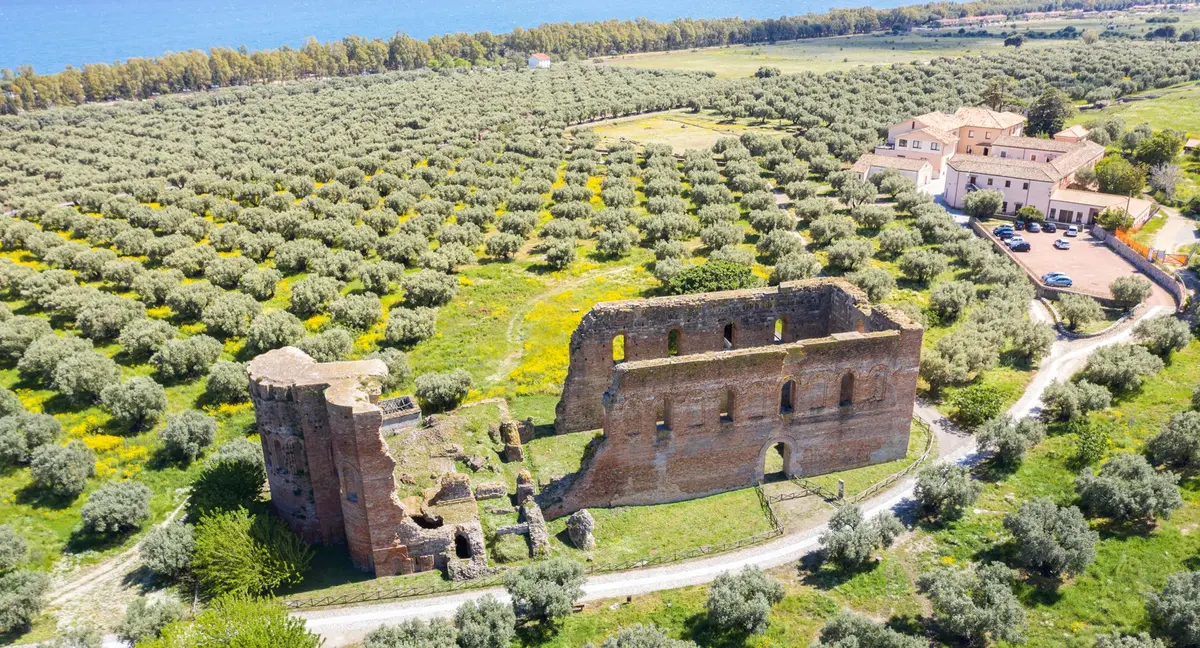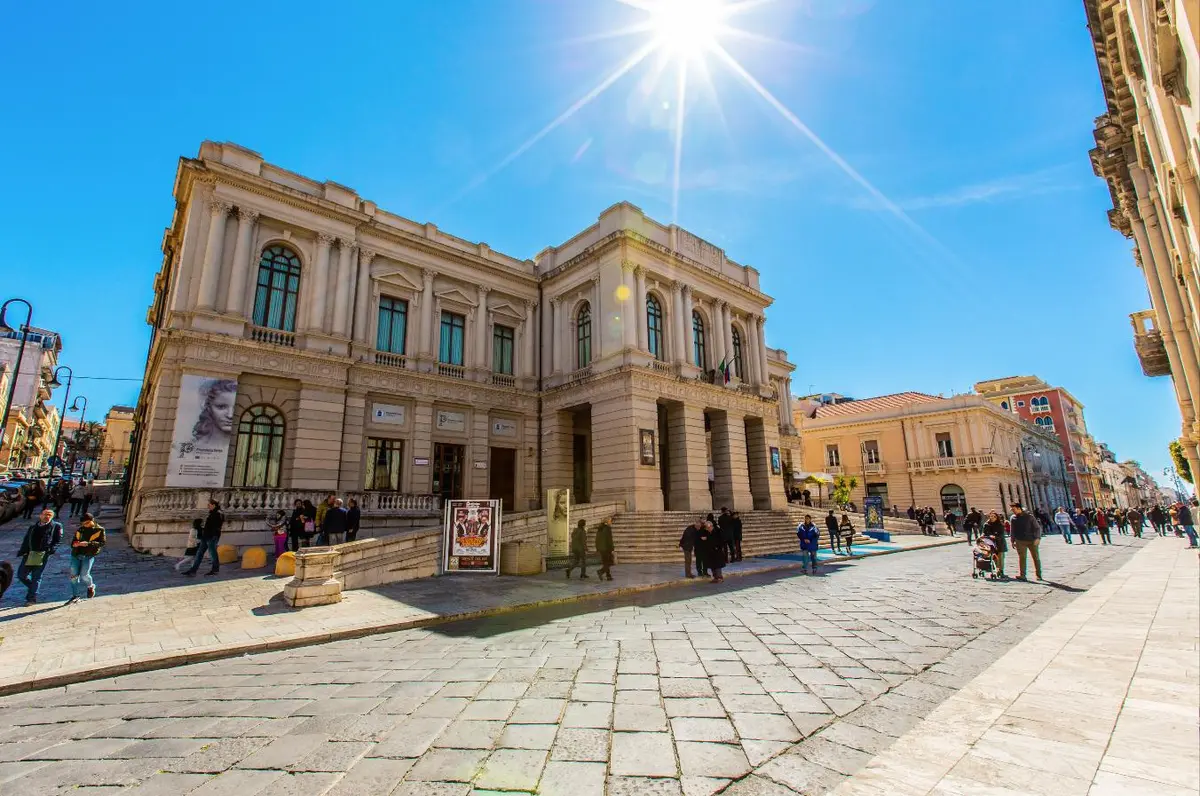Visit to the Scolacium Museum and National Archaeological Park
Excursion to the Scolacium archaeological park, from Magna Graecia to Cassiodorus surrounded by olive trees

Art and Culture
Regione Calabria
The land of Magna Graecia and the Romans lives again in the National Archaeological Museum and Park of Scolacium, the ancient city that was later Norman, immersed in a park of centuries-old olive trees facing the Gulf of Squillace, in the province of Catanzaro.
A stone's throw from the shore of the Ionian Sea, along the Costa degli Aranci, immersed in a centuries-old olive grove extending over 35 hectares, stands the Scolacium National Archaeological Museum and Park. A place of tranquillity and beauty, among the most important national archaeological parks in Calabria.
Let's take a dip back in time and discover the history, legends and beautiful landscapes offered by this glimpse of antiquity.
History of the Scolacium Archaeological Park
The Scolacium Archaeological Park and its adjoining museum are located in the municipality of Borgia (specifically, in the seaside hamlet of Roccelletta), in a rural setting of extraordinary beauty. The land on which the current Scolacium park stands belonged to the large estate of Baron Mazza, an estate devoted to oil production, as evidenced by the presence of a dense olive grove and the Oil Mill Museum, a pleasant example of industrial archaeology.
There is no mistaking it, as the area, which borders a pine forest on the opposite side of the sea, is immediately identifiable by the ruins that emerge at the roadside, primarily the monumental remains of the large 11th-century Norman basilica, consecrated to Santa Maria della Roccella, evidence of continuous use until the Middle Ages. On the sea side, Scolacium, history within history, offers us the remains of the Roman Forum, a large rectangular area paved with square bricks and surrounded by porticoes (Caesareum, Curia and Baths). Inside are the remains of a small temple, a monumental fountain and a courthouse. Most of the statues and portraits dating from the 1st to 3rd centuries AD that can be admired at the Scolacium Museum come from this area. On the hill stand the Theatre (1st-2nd century AD), with a capacity of 3,500 spectators, and the recently discovered panoramic Amphitheatre from the 2nd century AD, three thermal baths, a necropolis and the aqueduct.
But what is the history of the ancient city that today appears in the form of the Scolacium National Archaeological Museum and Park? To find out, you need to immerse yourself in the visit, among the paths that cut through the olive grove, and listen to what the remains tell us. It all began with the arrival of the Greeks, who founded the colony of Skylletion in this place kissed by the dawn. No trace remains of the ancient Greek city, as it was completely supplanted by the subsequent Roman city of Scolacium (120 BC). The last phase of the site's life is intertwined with the important figure of Cassiodorus, founder of the Vivarium monastic complex, and the Norman presence in nearby Squillace.
When were these wonders discovered and when was the Scolacium Park created? It was 1910 when archaeologist Paolo Orsi, the first Superintendent in Calabria, agreed with the owner of the estate to purchase a monumental bronze arm found in the olive grove. Since then, archaeological interest in the area has led to the first excavations by Ermanno Arslan (1965) and the state expropriation that transformed the area into the current Scolacium Archaeological Park. New discoveries during subsequent excavation campaigns have also enriched the small antiquarium of the origins, which today is an integral part of the Scolacium National Archaeological Museum and Park.

Visit to the Scolacium Museum
The Scolacium Museum completes the visit to the Scolacium Archaeological Park. Its rooms display the main archaeological finds unearthed during excavations and the gigantic statues. The important cycle of Roman statues and portraits culminates with the most evocative artefact, the colossal bronze forearm acquired by Superintendent Orsi in the early 1900s. The visit to the Scolacium National Archaeological Museum and Park, lasting about an hour and a half, ends with an interesting tour of industrial archaeology inside the Mazza Oil Mill (1934), where you can admire the ancient olive presses and other artefacts related to Calabrian peasant life.
A trip to the National Archaeological Museum and Park of Scolacium is the perfect opportunity to discover the entire coastline, from Catanzaro Lido to the Bay of the Seahorse in Soverato, stopping at some of the most beautiful beaches on the Costa degli Aranci.

https://calabriastraordinaria.it/en/news/visit-to-the-scolacium-museum-and-national-archaeological-park



